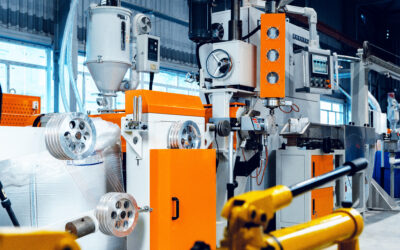5 levels of maintenance to put under the Christmas tree
As the festive season approaches, manufacturers are taking stock. How productive were their machines this year? Among the plants surveyed, around 5% of unplanned stoppages were due to breakdowns or maintenance in 2020. For a third of them, breakdowns represent 20% of the causes of annual stoppages.
The consequences can be serious, with delivery to the customer out of time, or worse: the stress generated by the need to make up for the delay can cause accidents…
The best way to avoid them: TPM
TPM (Total Productive Maintenance or Total Productive Maintenance is a corporate culture based on LEAN Management. It promotes maximum efficiency in production equipment. Its aim is to achieve ‘0 accidents, 0 breakdowns, 0 defects’.
The aim of this philosophy is to produce more and better by tackling waste (or Mudas). When applied to machines, this means seeking to maximise production time and ensuring that production is carried out at optimum rates while producing compliant parts. These are the 3 axes measured by the TRS: Availability, Performance and Quality.
The main change is in the mindset, with cooperation between departments, particularly between production and maintenance. The maintenance technician will also become a technical adviser, working with the operators.
TPM involves 5 levels of maintenance.
Level 1 maintenance or self-maintenance
Level 1 maintenance is the first level of maintenance, and is preventive. The operator carries it out by following a standard or a checklist, and after training. It involves visual checks, greasing and simple measurements. It is carried out periodically and quickly, for example at the start of each shift or at the beginning of each day. The frequency should be defined in relation to the manufacturer’s data, the breakdown history or any FMEA.
Level 1 maintenance involves the operator and increases his skills. They become capable of detecting abnormalities, vibrations or wear. At the same time, the use of 5S ensures that machines are clean and tidy. This saves time for the maintenance operator and means that any problems – such as leaks – can be detected more quickly.
Level 2 maintenance
Level 2 maintenance is also part of prevention. It involves the periodic replacement of parts, or adjustments that can be made by following a procedure.
This is usually done by maintenance technicians, although some operators who are committed, experienced and, above all, trained may be eligible.
Other maintenance levels (3-4-5)
Other levels of maintenance usually require production to be stopped. Calibrations or adjustments may be necessary. In-depth knowledge is essential, and may be internal or external.
At that point, the operator finds himself ‘technically unemployed’. The development of multi-skilling can certainly limit the loss of human time, but the availability of the machine is impacted.
How can you make the most of your time off?
When the workshop is closed, maintenance time is outside production time. This is the time to carry out level three, four and five maintenance. In this way, these operations have no impact on production.
What’s more, technicians and other machine operators don’t feel the pressure of a manager ready to do anything to save a few minutes and meet his targets. Be careful, however, not to overdo the maintenance, which would generate unnecessary costs. That would be a waste! But how do you know when the time is right for this meeting? And what if production doesn’t stop at the holidays?
Non-stop production
If production doesn’t stop during the holidays, we no longer have a slot to carry out level three, four or five maintenance. Each stoppage will affect our availability and therefore our production. In this case, you need to choose the best time to work on your machines. Premature intervention is a waste of time. Conversely, neglecting the needs of the machine is a mistake. It can lead to poor quality, a breakdown or, worse still, endanger the people in the workshop.
Thanks to the IoT, it will soon be possible to know the state of components inside machines, and at the same time predict the ideal moment for intervention. This will make it possible to maximise the use of production tools by limiting downtime. This is predictive maintenance.
In conclusion
While your maintenance team is doing its utmost during the plant shutdown, isn’t it time to consider the impact of breakdowns on production? If you’re equipped with a performance analysis tool like PerfTrak, you’ll be aware of these figures.
But are the LEAN tools deployed to process this information and improve productivity? And if you don’t have an analysis tool, do you have any idea of the cost of downtime for your production machines? We look forward to finding the answers to these questions,
Happy holidays from the whole team at TeepTrak!



0 Comments